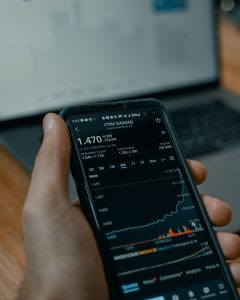Seputar Forex: A Beginner’s Guide to Trading in the Foreign Exchange Market
The foreign exchange market, also known as forex or FX, is the largest and most liquid financial market in the world. With an average daily turnover of over $6 trillion, it offers endless opportunities for individuals to trade currencies and potentially profit from the fluctuations in exchange rates. However, diving into the forex market without proper knowledge and understanding can be overwhelming and risky. That’s why this beginner’s guide aims to provide you with a comprehensive overview of forex trading, from the basics to the strategies that can help you succeed.
What is Forex Trading?
Forex trading involves buying and selling different currencies to take advantage of the changes in their relative values. This market operates 24 hours a day, five days a week, across various financial centers worldwide. Unlike other financial markets, forex trading does not have a centralized exchange, but rather it is conducted over-the-counter (OTC) electronically through a network of banks, financial institutions, and individual traders.
Currency Pairs and Exchange Rates
The key to forex trading lies in understanding currency pairs and exchange rates. A currency pair represents the value of one currency in terms of another. For example, the EUR/USD pair represents the value of the euro in relation to the US dollar. Exchange rates determine the value at which one currency can be exchanged for another. These rates are influenced by various factors, such as economic indicators, geopolitical events, and market sentiment.
Basic Concepts in Forex Trading
To begin trading in the forex market, it is essential to familiarize yourself with some basic concepts:
1. Pip: A pip is the smallest unit by which a currency pair can move. It represents the fourth decimal place in most currency pairs. For example, if the EUR/USD pair moves from 1.2000 to 1.2005, it has increased by 5 pips.
2. Lot Size: A lot refers to the standardized quantity of a currency pair. The three main lot sizes in forex trading are standard lots (100,000 units), mini lots (10,000 units), and micro lots (1,000 units). The choice of lot size depends on your trading capital and risk tolerance.
3. Leverage: Leverage allows traders to control larger positions with a smaller amount of capital. It is expressed as a ratio, such as 1:100 or 1:500. While leverage can amplify profits, it also increases the risk of losses. Therefore, it is crucial to use leverage wisely and manage your risk effectively.
Forex Trading Strategies
Successful forex trading requires a well-defined strategy and disciplined approach. Here are some popular strategies that traders employ:
1. Trend Trading: This strategy aims to identify and follow the prevailing market trend. Traders look for patterns and indicators that indicate the direction of the trend and enter trades accordingly. The key is to ride the trend until it shows signs of reversal.
2. Range Trading: In range trading, traders identify levels of support and resistance and trade within the price range. They enter buy orders near support levels and sell orders near resistance levels. This strategy is suitable for markets that lack a clear trend and exhibit sideways movement.
3. Breakout Trading: Breakout traders look for price patterns that indicate a potential breakout from a consolidation phase. They enter trades when the price breaks above a resistance level or below a support level. This strategy aims to capture significant price movements that may occur after a period of consolidation.
Risk Management in Forex Trading
Managing risk is crucial in forex trading to protect your capital and avoid significant losses. Here are some risk management techniques to consider:
1. Set Stop-Loss Orders: A stop-loss order is a predetermined level at which you will exit a trade to limit your potential losses. It is essential to set stop-loss orders before entering a trade and adhere to them strictly.
2. Use Proper Position Sizing: Determine the appropriate lot size for each trade based on your risk tolerance and the size of your trading account. Avoid risking a significant portion of your capital on a single trade.
3. Diversify Your Portfolio: Instead of focusing on a single currency pair, consider diversifying your trades across different pairs and asset classes. This helps reduce the impact of a single trade on your overall portfolio.
Conclusion
Forex trading can be an exciting and potentially lucrative endeavor for beginners and experienced traders alike. However, it is essential to approach it with the necessary knowledge, skills, and discipline. This beginner’s guide has provided you with a solid foundation to start your journey in the forex market. Remember to continue learning, practicing, and refining your strategies to increase your chances of success.





